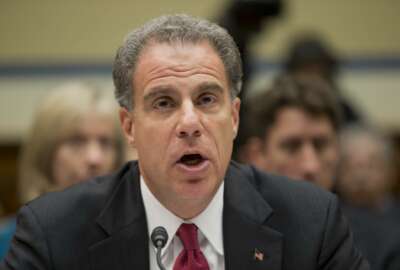
Trumpexit predictions
The Trump administration may be in for a surprise if it resorts to reductions in force, says Senior Correspondent Mike Causey.
So what are the grandchildren of the Chicago Tribune headline writers (who produced the iconic 1948 “Dewey Defeats Truman” headline) doing now? How about the next-of-kin of the experts who assured the world that the United Kingdom would never vote to leave the European Union? Are some of them now in the equally tricky business of reading the minds, hearts and feet of 2.6 million federal employees? If so, lots of luck. Consider…
Federal workers in Ames, Iowa, or Chincoteague, Virginia may differ from their colleagues here at headquarters. But it is likely that in education, training and in some cases even in pay, they definitely hold their own compared their neighbors in the private sector.
Experts who predicted a mass exodus from government service in the unlikely event that Donald J. Trump won the presidency missed the boat. At least so far. They predicted that retirements from the civil service would spike as feds fled (quitting or retiring) in fear or disgust. But it hasn’t happened yet. Retirements in December, January and February of this year were lower than in those months in 2016 or 2015. Now with the tough new budget proposal — that whacks places like HUD and the EPA — the retirement rate, the number of federal and postal workers retiring in January of this year was 3,300 less than in January 2016. The February 2017 total for retirements was 9,114, or about 2,000 less than those that left in February 2016.
Now some government-watchers are predicting that the president’s proposed new budget (“proposed” being the operative word) will dramatically downsize the non-Defense/Homeland Security side of government. One expert figured that if Congress approved the budget package without change that employment in the metro Washington area would drop 1.8 percent. The metro area, the District of Columbia, Maryland, Virginia and portions of West Virginia, is home to slightly more than 15 percent of the total federal workforce.
What the pros haven’t taken into account (because it’s hard to get inside people’s heads) is what impact the cuts would have on people who have a good, steady government job and like what they are doing maybe a lot more than they like who’s occupying the White House. There is also a history of people hanging onto their jobs — not retiring immediately once eligible — until the private sector job market improves. And the economy is rolling along. Although the unemployment level is now below 5 percent and tens of thousands of new jobs are being created, many of them are not what skilled, long-timers with security clearances and many talents are anxious to apply for.
Congress never (at least in modern times) completely approves the budget submitted by the president. Even if the same party controls the House, Senate and the White House. In many parts of the nation, in red states, the federal government is the employer of choice. Although it might surprise folks inside the Beltway or the White House — places like Ogden, Utah are government towns. The biggest employer, by far is the Interior Department, Defense and the Internal Revenue Service, which has a huge footprint there. VA hospitals and centers, federal prisons and Army, and Air Force bases are major employers in many remote-from-Washington places. Think of the Navy and think of Norfolk or San Diego.
If the Trump administration has to resort to layoffs (reductions in force, in govtalk) to downsize the non-DoD portion of government, new-to-the-ways-of Washington appointees will learn about the chaos that a RIF can cause as workers with seniority who lose their jobs bump less senior, non-veterans out of their jobs.
Nearly Useless Factoid
Hummingbirds get their name not from actually humming, but the sound they create by flapping their wings between 60-200 times per second.
Source: Wonderopolis
Copyright © 2025 Federal News Network. All rights reserved. This website is not intended for users located within the European Economic Area.
Mike Causey is senior correspondent for Federal News Network and writes his daily Federal Report column on federal employees’ pay, benefits and retirement.
Follow @mcauseyWFED
Related Stories





